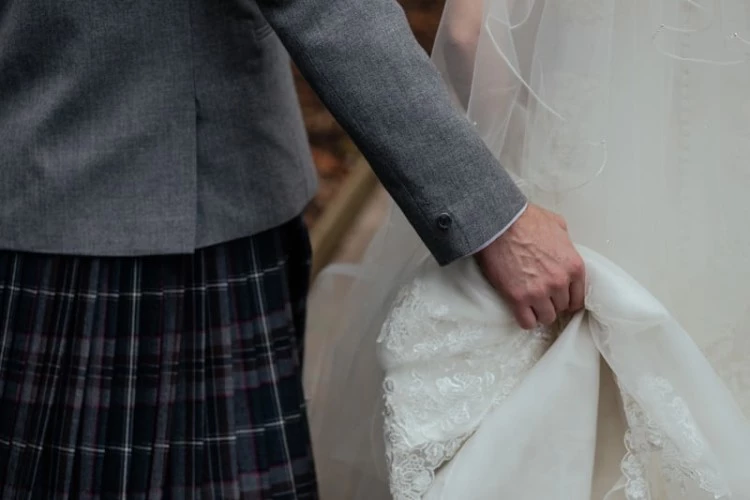Netferry explores Scottish weddings

Today Netferry is in Scotland, to experience a traditional Scottish wedding! If you think wearing a kilt is enough, you're wrong! A Scottish wedding is full of specifically Scottish traditions, that continue to live on for both the happy couple and their guests, today Netferry explores these customs.
Unusual traditions
First, there is the washing of the feet, which involves the bride having her feet washed by an already married woman, and then she will have to start with the right foot to reach the place of the ceremony. Another superstition was to put an old sixpence coin in the bride's shoe. A sprig of white heather hidden in the bride's bouquet is also a popular good luck token in the Scottish Borders. The father of the bride takes part in the Wedding Scramble, which involves throwing coins to the children, while the bride gets into the car, this tradition is known as warsel in the region of Ayrshire.
The ceremony
The wedding begins as a gathering at the church, then the bride walking down the aisle, in Scotland this is often accompanied by bagpipes and violins. The groom walks with the bridesmaid, and the bride follows accompanied by the groomsmen. In the past, the spouses would also cross a stream twice according to superstition.
Scottish weddings also involve handfasting or the binding of hands. This tradition is of Celtic origin, dating back to the 1200s, the bride and groom each reach out their hands palm to palm and they are tied together with a ribbon six times. The ribbon or rope symbolizes union.
At the end of the ceremony, during the banquet, a silver cup with two handles, known as a quaich, is filled with whiskey. The bride sips it first and then passes it around to rest of the guests. The family quaich is usually handed down from generation to generation, as a symbol and lucky charm for the new spouses! As for the food, in the past, people would sometimes have, what is known as a Penny Wedding. A Penny Wedding was to keep wedding costs down; all of the guests would bring a dish and the cake the bride and groom would provide only the cake!
The dancing!
A wedding always involves dancing, and at Scottish weddings, people often have a cèilidh, which consists of a series of traditional dances with different names, set to folk music. Some of the dances are fast, and others are slow, but they all have a set routine that many Scottish people know from childhood. The Traditional Grand March is traditionally the first dance, in which the two spouses march to the sound of the bagpipes, then the bridesmaid and the witnesses join them, the parents follow along with the rest of the guests. The last dance is the Lang Reel, which originates from Scottish fishermen and intended to move the procession to the village, then each couple leaves the procession near their home, as to leave the newlyweds alone for the last dance.
The clothing
While the bride wears the traditional white dress, the groom is more extravagant: he wears a kilt, in the colours of his clan. His outfit is complete with all of the accessories, including high socks, a sporran, shoes with laces tied up to his calves with a knife in the hem of his sock!
Ferries to Scotland
Visit the NetFerry website to find out how easy it is to book your ferry trip to and from Scotland! We have all of the information regarding departure and arrival times, ports and shipping companies. You can find out about the current costs and promotions and buy your ship ticket to Scotland in total safety.
With Netferry, your ferry in a few clicks.
